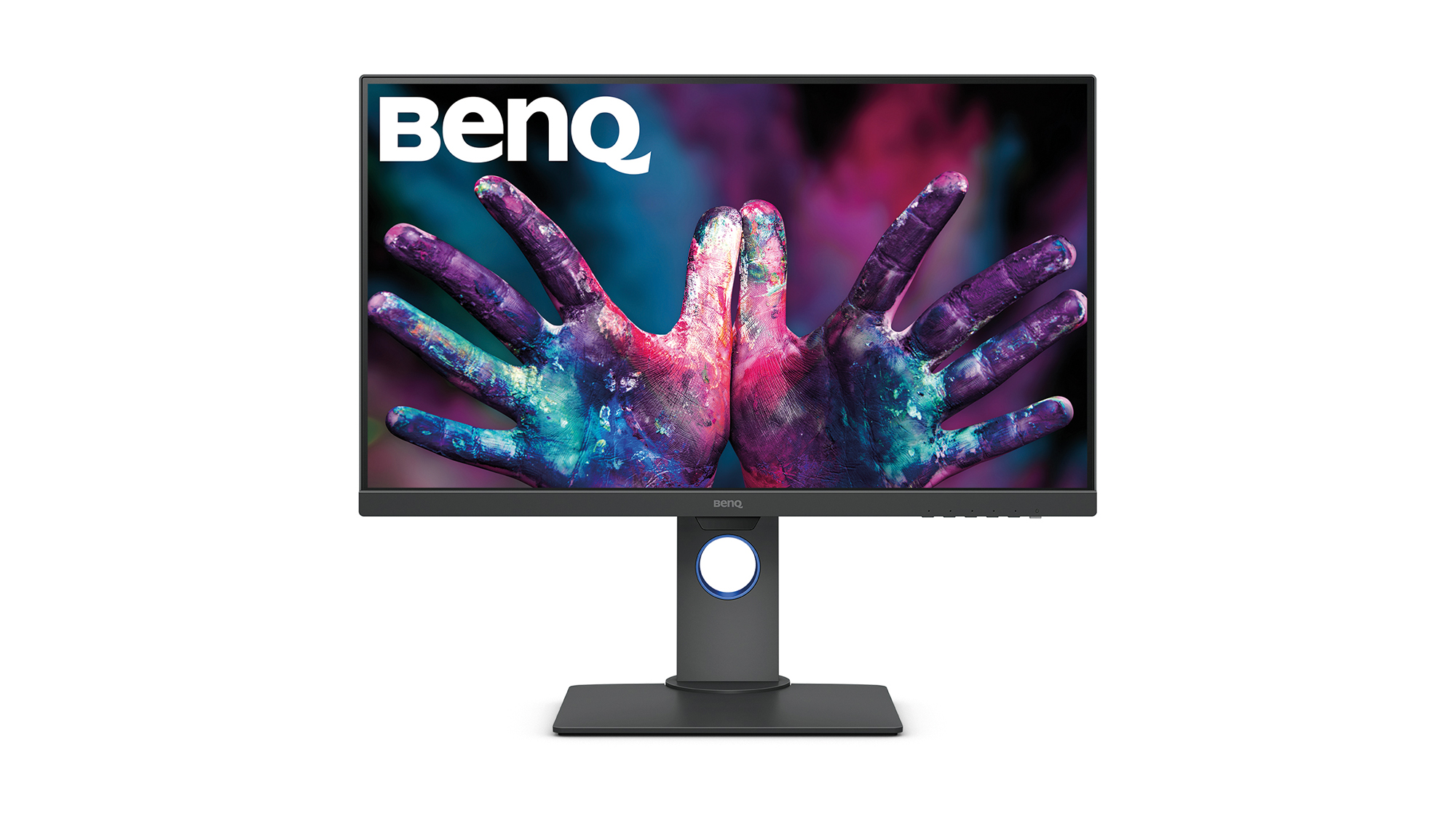BenQ PD2705Q review: Terrific value for everyone except print designers
For creatives who work in sRGB or Rec.709, this is nothing short of a bargain


-
+
Great value
-
+
Excellent sRGB and Rec.2705Q
-
+
Highly adjustable
-
-
No Adobe RGB coverage
-
-
No VESA DisplayHDR 400 certification

Not every creative professional can afford to spend over £1,000 on a monitor, but BenQ reckons it has the answer in the PD2705Q: a hardware-calibrated display with the assurance that even screens from different production lines will output consistent colours. Each monitor comes with its own calibration report and the promise of an average Delta E of under three, plus certification from CalMAN and Pantone.
What you don’t get is coverage of the Adobe RGB gamut, so print designers need not apply, but if your work is within the sRGB or Rec.709 gamuts then you’ll be happy: the PD2705Q achieved stellar scores of 96.2% coverage/98% volume with a 0.47 average Delta E, while you can widen its gamut by switching to Standard mode where it reached figures of 99.2%, 114.4% and 0.28.
If you connect over USB-C or USB-B, you can take advantage of BenQ’s Display Pilot software. This gives control over simple things such as brightness, rather than go through the clunky OSD, along with more advanced tools such as automatically associating colour modes with different applications.
A USB-C output means you can daisy-chain two monitors together, and theoretically you could make it three screens; the main USB-C connection provides 65W of power to the host laptop.
Video editors should note that there’s no VESA DisplayHDR 400 certification, but support for HDR10 means you can get a good idea of how content looks before you press “Export”. You won’t see the full brightness levels because the panel isn’t capable of it: our sample peaked at 327cd/m2, and even that is well beyond the typical 300cd/m2 peak brightness that BenQ promises.
BenQ supplies a flexible stand to match this flexible monitor, with support for pivoting and 120mm of height adjustment, and for the price we can forgive minor annoyances such as the four USB-A ports being placed around the back of the monitor. Nor can we expect 4K. We don’t recommend this screen for everyone, but it’s terrific value for its target audience.
BenQ PD2705Q specifications
| Screen size | 27in |
| Screen resolution | 2,560 x 1,440 |
| Screen technology | IPS |
| Screen refresh rate | 60Hz |
| Video inputs | 1x DisplayPort 1.4, 1x HDMI 2, 1x USB Type-C |
| Audio inputs/outputs | N/A |
| Speakers | 2x 2W |
| Ports | 4x USB 3, 1x USB Type-C (65W), USB-B |
| Adjustability | 120mm height adjustment, -5°/+20° tilt, 90° swivel, portrait mode |
| Dimensions | 614 x 231 x 429-549mm |
| Weight | 5.7kg |
| Warranty | 3yr |
Sign up today and you will receive a free copy of our Future Focus 2025 report - the leading guidance on AI, cybersecurity and other IT challenges as per 700+ senior executives
Tim Danton is editor-in-chief of PC Pro, the UK's biggest selling IT monthly magazine. He specialises in reviews of laptops, desktop PCs and monitors, and is also author of a book called The Computers That Made Britain.
You can contact Tim directly at editor@pcpro.co.uk.
-
 Qualcomm the data center with $2.4 billion Alphawave Semi acquisition
Qualcomm the data center with $2.4 billion Alphawave Semi acquisitionNews The move sees Qualcomm absorb Alphawave Semi’s portfolio of custom silicon, high-speed connectivity solutions, and chiplets
By Daniel Todd Published
-
 ‘If software development were an F1 race, these inefficiencies are the pit stops that eat into lap time’: Why developers need to sharpen their focus on documentation
‘If software development were an F1 race, these inefficiencies are the pit stops that eat into lap time’: Why developers need to sharpen their focus on documentationNews Poor documentation is a leading frustration for developers, research shows, but many are shirking responsibilities – and it's having a huge impact on efficiency.
By Ross Kelly Published
-
 OpenAI says GPT-5.2-Codex is its ‘most advanced agentic coding model yet’ – here’s what developers and cyber teams can expect
OpenAI says GPT-5.2-Codex is its ‘most advanced agentic coding model yet’ – here’s what developers and cyber teams can expectNews GPT-5.2 Codex is available immediately for paid ChatGPT users and API access will be rolled out in “coming weeks”
By Ross Kelly Published
